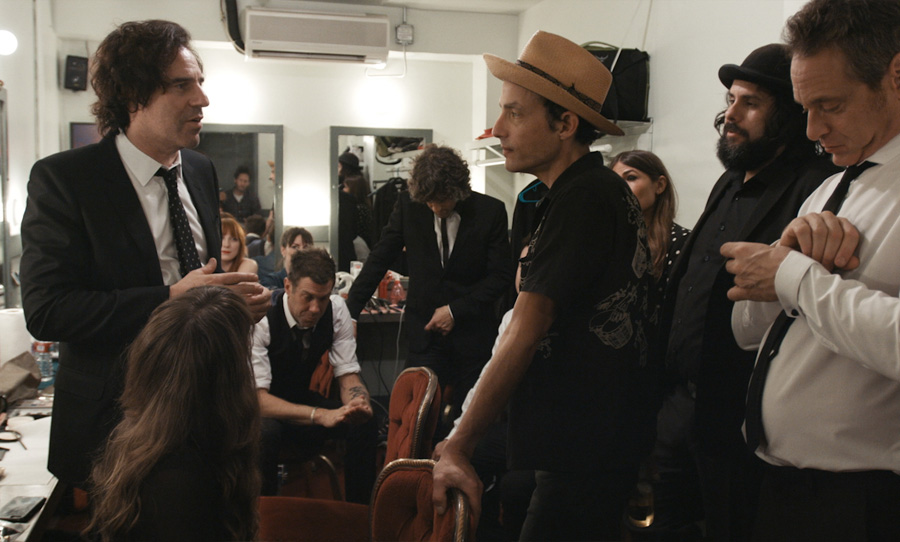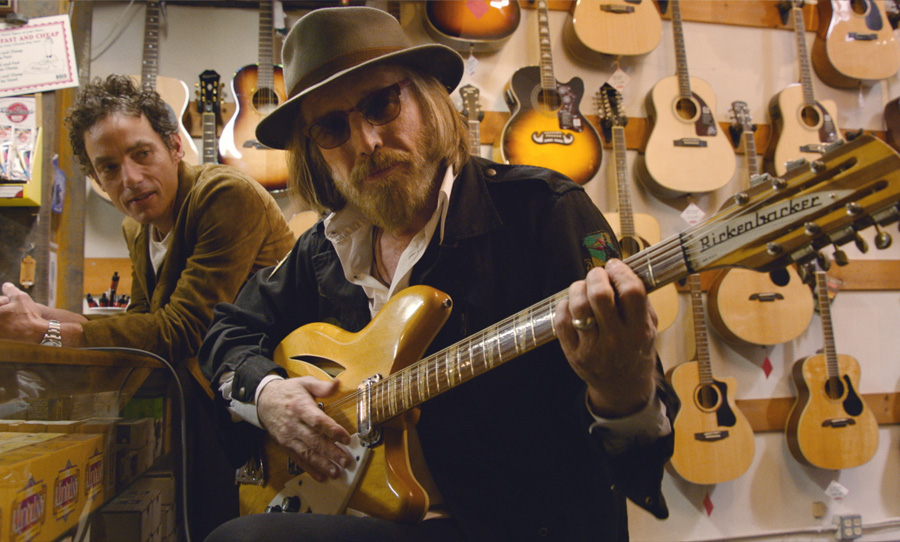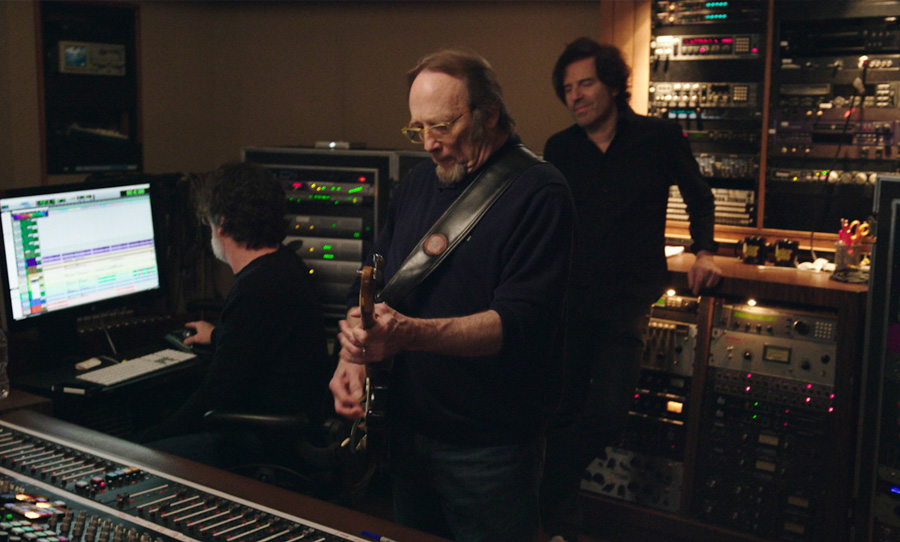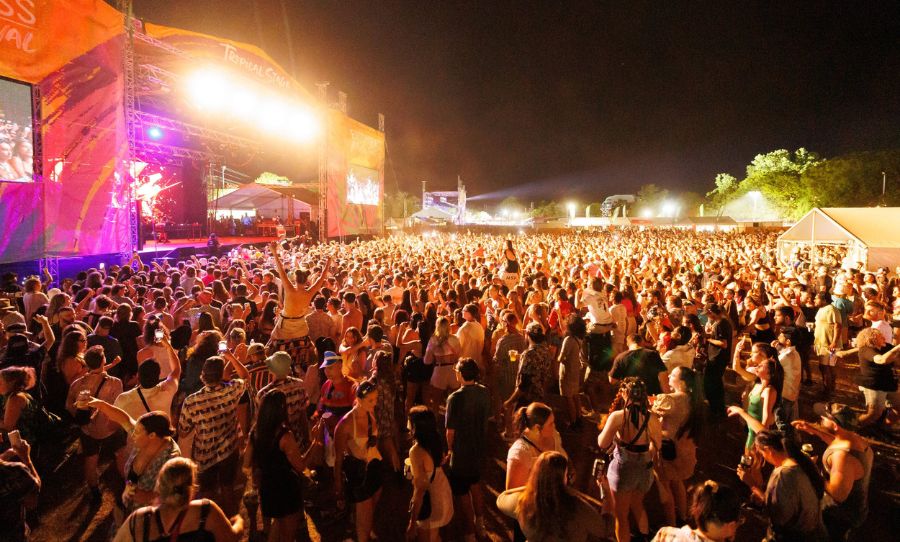Echo in the Canyon is a sublime documentary about a serendipitous time and place in music history: Laurel Canyon. Between 1966 and 1968 the quiet Hollywood Hills suburb was home to a score of game-changing acts including The Beach Boys, Buffalo Springfield, and too many others to count.
Initially inspired by rampant Beatlemania across the pond, the scene developed into a self-sufficient ecosystem that spawned iconic records like Pet Sounds. It was an artist-led community where collaboration was paramount, wild parties turned into days-long songwriting sessions, and riffs were passed around like joints.
Laurel Canyon’s residents had front row seats to the electrification of folk music, not to mention what would soon become psychedelic rock. Andrew Slater, a journalist, record producer, and former CEO of Capitol Records, set out to capture this eclectic and influential period in music a couple of years back. His initial vision, however, was far from a documentary film.
With Echo in the Canyon finally released digitally in Australia, we took the time to sit down with Andrew, tracing the star-studded path he took to make his film a reality, and inquiring once again into what made this moment in the late ’60s so, so special.

Hosted by Jakob Dylan and featuring Tom Petty, Beck, Regina Spector and more, Echo in the Canyon is Andrew Slater’s rose-tinted ode to LA’s long-gone ace of innocence.
HAPPY: So you’ve never made a documentary before. What about this story warranted that format over a book, or even a retrospective record?
ANDREW: To be honest, I’m a record maker, that’s my experience up to this point. I set out to make new versions of these songs that I thought had an interesting story. It started with that. And I’d seen this film Model Shop by Jacques Demy and it showed me Los Angeles at a time of incredible innocence, I guess it was through the director’s vision and the cinematographer’s lens that the streets of LA looked like… I don’t know, something more idyllic than what I see every day. So that sent me on this journey to look at the songs of that period, not only from ‘68 when I think that film was released, but the beginnings of that scene. I looked to The Byrds and The Beach Boys and The Mamas & The Papas to find a way to bring that music to life again, and in the course of doing that, it led me to the songs and the stories behind those songs and me wanting to know what they were.
I went to documentary filmmakers to make this film like ‘here’s the idea, it starts with The Byrds’ first record, the electrification of folk music, and all these people’s ideas echoing in one place, creating this magical moment in music’. And the guys said to me “yeah that sounds like a good idea but it’s too expensive and it won’t really work in the format you’re talking about… a concert and a record”. Someone said “why don’t you make the film?”, I thought that guy’s an idiot because I’ve never made a film, but I called people who I knew who I’d work with on music videos and such, they said ‘you’re a journalist, you’re a writer, just get an editor and talk about the things you want to do’. Then a few years later it all came to fruition.

HAPPY: In terms of screening and selecting songs to reimagine for this film, what was that process like? Was it collaborative with Jakob [Dylan] and the artists, or did you have a pretty firm idea of what the songs would be?
ANDREW: I mean, I was using the songs as the tent poles to the story. So for me, you know, you want to look at the electrification of folk music and how [Roger] McGuinn was really adept at taking one idea and bringing it to life in another medium… there were obvious records there. But the frame of the film for me, the song is Expecting to Fly. Even though the song itself is about the end of a relationship, it becomes to me about the end of the innocence era. The era itself was about kindness and sharing a lot of ideas with these people who didn’t realise what could be at stake in terms of the chain of money, power, and all these things. And so the film opens with that over these shots of the canyon, and then it ends with Jake and Regina Spektor, taking this song that was maybe from the writer’s perspective to another woman, and then making it a dialogue between two people at the end of something.
Then it’s obviously played in front of Model Shop… so that’s one song that I thought had to be done. Then as you see, these guys were really trying to emulate the Beatles at the time – multiple songwriters, multiple singers, harmony structure – when George Harrison hears [The Byrds’ version of] The Bells of Rhymney, he writes If I Needed Someone which ends up on Rubber Soul. When Brian Wilson hears Rubber Soul, he sets out to do Pet Sounds, then when the Beatles hear Pet Sounds they set out to do Sgt. Pepper. So it’s the echo of those ideas that become the basis of the film. The long answer to your question is that the songs that I picked became the storyline, so people went along with it.
HAPPY: That idea of cross-pollination that comes up so often in the film, and you’ve just brought it up again now. Do you think some of that’s been lost now, with the access we have to recorded music? A sort of option paralysis.
ANDREW: I don’t know, in hip hop I think that exists where people borrow from each other and reference each other. And clearly, across time, there are contemporary artists taking from a different time. I think you can see in the work of Beck there are obvious references to time periods. But as far as sharing the ideas, it’s hard to say. Everybody’s wearing a mask now so nobody can see what each other are doing! I think that artists are probably doing that on a smaller level, I’m not sure that it’ll ever be quite like it was.
HAPPY: These game-changing moments, do you think it’s possible to realise you’re amongst one?
ANDREW: I think for all of us – this is just the nature of human beings – it’s very hard to recognise something that’s happening in the moment. What is it, the Heisenberg theory? The mere examining of something changes what it is, or what it’s going to be. I also think that nostalgia is intoxicating. When we look back at things, we just naturally glorify things, if they had an impact on us or a particular moment of time in our lives. So I don’t think anybody in that moment knows how special it is, that requires reflection. And time to resonate. That’s how you know how great something is, or will be.
HAPPY: Where does psychedelic rock play into this puzzle? Because the film is kind of showing the genesis of it.
ANDREW: Yeah, for some people I think Laurel Canyon is this sort of broad idea. To me, the reason I made this film is that I think there were three periods in Laurel Canyon. The first period, the one that we’re talking about, is when all these people come to California and start making bands. And then the psychedelic thing takes over and then you have The Doors, then you have Riot on Sunset Strip, and it sort of expands as people expand their experimentation with drugs.
So in the film, Beck says it really started with the Beatles on Ed Sullivan, and then it became all these bands, then it became these individuals who were searching for their own path. The singer/songwriter phase I think came after the psychedelic period, maybe as a reaction to it. Those are the three periods, and for me it was about the first period of collaboration.
HAPPY: Fantastic. I’d never really made that connection myself, but so much in the movie, that free escapist spirit – even Regina at the end makes a point about people “making music for the unconscious mind” – those ideas really fed into what was about to happen with psychedelics.
ANDREW: And then the film ends, you see Neil Young in ‘66 lifting up his guitar and when he brings it down, there he is in present day playing a psychedelic solo by himself in a room. That was my very subtle nod, ‘here’s the next period’. I think most people won’t really get that, but I was entertained by it.

HAPPY: Well I was too. Were there any important structural differences in the music industry at the time that allowed for this super productive period?
ANDREW: I don’t know if it was so much the music industry that allowed this creativity, it was probably more that people… people saw A Hard Day’s Night and they saw how fun it could be to be in a band, and so they wanted to do that and they all came to one place. There wasn’t an overriding sense of fame and money in the beginning, people were just trying to do things because it was the only thing they could do to express pain, love, joy… they came together to do that. Once those things became apparent, perhaps, the search for the individual coincided with the power and money that the industry began to generate.
HAPPY: Maybe it’s not the music industry then, but a lack thereof. Or at least a presence that wasn’t being felt.
ANDREW: I think they all just wanted to be working, they were just happy to be working. And working together.
Echo in the Canyon is available on digital and on demand from August 5. You’ll find it on Apple, PSN, Microsoft, Google, and Fetch.



